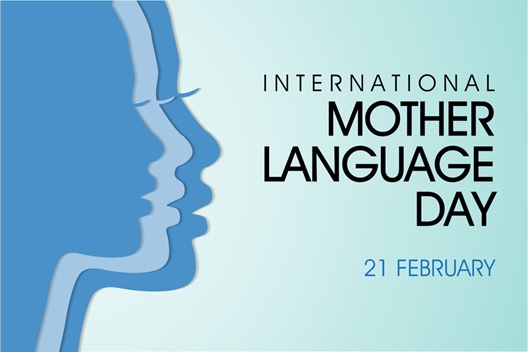International Mother Language Day 2024: Theme, History, Celebration

People around the world is celebrating International Mother Language Day 2024 on February 21.
This day is also recognized as Matribhasha Diwas. It was announced by UNESCO on 17 November 1999 and it has been observed since 21 February 2000.
Last year, the theme of International Mother Language Day is “Multilingual education – a necessity to transform education”. This special day focuses on promoting awareness of linguistic and cultural diversity and also multilingualism.
As knowledge grows, people are coming to understand that languages are critical for growth, ensuring cultural variety, and facilitating international conversation, but they are also important for cooperation and educational quality for everyone.
International Mother Language Day 2024 Date
International Mother Language Day 2024 Date | February 21, 2024 |
International Mother Language Day 2025 Date | February 21, 2025 |
International Mother Language Day 2026 Date | February 21, 2026 |
International Mother Language Day 2027 Date | February 21, 2027 |
History
On UN resolution A/RES/56/262 of 2002, the General Assembly of the UN supported the declaration of a UN day. In the Resolution of the United Nations General Assembly A/RES/61/266, 16 May, 2007, on Member States the motive was “to publicize the protection and management of all languages in use by nations and people,” member states are encouraged to take action to preserve and protect all languages spoken by people across the globe.
Multilingualism and diversity were encouraged during the International Year of Languages in 2008, with the goal of promoting unity in variation and global understanding. UNESCO was selected as the year’s primary agency by the General Assembly.
Check Other Important Days in February
Although there is no doubt that this campaign did raise awareness regarding language diversity and multilingualism issues around the world, it may also have mobilised resources and partners in different places throughout the globe and various methods and regulations for language variety and multilingualism.
Language has an essential function in creating change and growth in human civilization. When linguistic variety was increasingly endangered, the International Year of Languages was established.
Bengali Language Movement
The subcontinent of India was split into two distinct Muslim and Hindu states after Indian independence from British control (India). There was a cultural and linguistic clash between the newly created nation of Bangladesh (which later became the country of Bangladesh) and the existing state of Pakistan (Today Pakistan).
Due to the declaration of Urdu as the national language in 1948, the tensions amongst the people of Pakistan increased. The Bengali-speaking majority in East Pakistan organized many violent demonstrations as a result of the government’s decision. In early February of 1952, several students from the University of Dhaka held a protest together with various activist organizations. Pupils, college kids, and protesters all were shot at by the police during the rally the following day. These students’ sacrifice is commemorated annually on International Mother Language Day.
On February 29, 1956, the federal government of Pakistan finally agreed to acknowledge Bengali as the second official language of the country. Bangladesh and Bengali were declared official languages of East Pakistan in 1971 when it became an independent nation.
This day was proclaimed in November of 1999, and it was marked for the first time on February 21st, 2000, when the General Conference of UNESCO issued a declaration on it.
Celebration
The United Nations supports and helps conserve indigenous history by promoting cross-border languages. Those in Africa and South America who speak Quechua as well as people from surrounding nations have a similar culture. This day marks the beginning of many UNESCO-run events, one of which focuses on helping people learn to use their mother tongue and also on expanding their language knowledge. To help encourage the study of languages, many governments and non-governmental organizations issue a number of policies as well. Schools and universities hold many cultural events to recognize the variety of languages.
The existence of many languages is under danger, since some are becoming extinct. UNESCO believes that a 40% population of the globe has little or no access to education in their first language. It is important to increase advancement in vernacular language teaching in order to understand the importance of mother tongue-based education system.
International Mother Language Day 2024 Theme
International Mother Language Day 2024 theme is “Multilingual education is a pillar of intergenerational learning”.
International Mother Language Day 2023 Theme: multilingual education – a necessity to transform education
International Mother Language Day 2022 Theme: “Using technology for multilingual learning: Challenges and opportunities”.
The theme of the 2021 was “Fostering multilingualism for inclusion in education and society,”
FAQs
February 21, 2024
“Multilingual education is a pillar of intergenerational learning”
UNESCO





This year, in celebration of the International Mother Languages Day at the University of Guyana, a major focus of the Guyanese Languages Unit is to increase awareness through the creation of written public signs at various public places and attractions. An emerging landscape, via written public signs of these sites, would not only awaken communities to increased oral use of their language, but also foster closer ties to their cultural heritage and homelands. The signs would also enable visitors to appreciate the contribution made by Indigenous Peoples to the numerous original place names of Guyana.
For example, in Maruranau, a Wapichan village in Region 9, one can hear of the Maroro Naawa ‘The Giant Armadillo’s Hill’; Paashim Ba’oko ‘The Ant-eater’s Pool’; Maroro wa’o Kuwuzoo ‘Source of Maruranau Creek,’ to name a few. In short, what the public signs would highlight, for years to come, is that these landscapes have some historical, territorial, and linguistic continuity of the original inhabitants – the ancestors of the indigenous people.
(A note from Dr. Adrian Gomes, Maruranau Village, Coordinator of the Wapichan Wadauniinao Ati’o” (WWA), [Wapichan for upcoming generations], the Wapichan literacy association. Dr. Gomes is also a Researcher at the Amerindian Research Unit, University of Guyana.)
I wish to mark the International Mother Language Day every year wherever the day finds me. This year I wish to give a talk in Kisumu to the public an understanding of the value of Mother Languages as spelt out in Kenya’s 2010 Constitution.